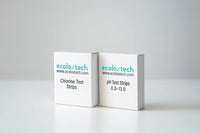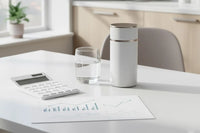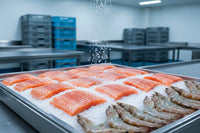A cruise ship is paradise… until norovirus hits. Then it’s hell at sea.
One contaminated surface. One infected passenger. And suddenly, the entire vessel becomes a floating outbreak zone.
Norovirus spreads faster than most pathogens in confined environments. It resists alcohol sanitizers, survives on hard surfaces for weeks, and causes violent symptoms that wreck itineraries, strain medical crews, and stain brand reputations for years.
Norovirus: The $100 Million Virus
Each year, norovirus costs cruise operators:
- 💸 Millions in passenger compensation
- 🚫 Cancelled or cut-short voyages
- 💀 Destroyed public trust
- 🧽 Constant fogging, spraying, and re-cleaning
- 💡 Reputational damage that lives in headlines and reviews forever
It only takes 10–100 viral particles to infect someone. That’s:
- One sneeze
- One touched handrail
- One buffet tong
- One contaminated cabin surface
Now multiply that by 3,000 passengers, 1,500 crew, and 7 days at sea. It’s a microbial powder keg.
Why Old Sanitizers Fail at Sea
Most cruise sanitation programs rely on:
- Bleach (irritating, corrosive, needs PPE and rinse)
- Quats (ineffective against norovirus, leave residue)
- Alcohol (ineffective against non-enveloped viruses like norovirus)
- Ozone (dangerous to inhale, requires room evacuation)
These chemicals can’t be fogged safely in occupied areas, require room lockdown for 30–60 minutes, destroy metal fixtures and fabrics, and still fail to fully kill norovirus unless perfectly applied and rinsed.
HOCl: The Cruise Line Game-Changer
Hypochlorous acid (HOCl) is the same molecule white blood cells produce to kill viruses and bacteria in the human body. When generated on-site using salt, water, and electricity, it becomes a pH-neutral, non-toxic, EPA-registered disinfectant that can:
- ✅ Kill norovirus, E. coli, Listeria, and more
- ✅ Be fogged in occupied rooms and cabins
- ✅ Leave no residue or odor
- ✅ Require no rinse
- ✅ Be safely sprayed on bedding, surfaces, electronics, food stations—even hands
Real-World Use: Norwegian Cruise Line
Norwegian Cruise Line was one of the first major operators to adopt HOCl technology across their fleet.
By using EcoloxTech HOCl generators, they were able to:
- Install fixed fogging units in cabins, kitchens, and common areas
- Deploy mobile spray systems in dining halls, theaters, and stairwells
- Replace harsh chemical regimens with safe, scalable sanitation
Result:
- Passenger illness reports dropped dramatically
- Crew sanitation compliance improved
- Rooms sanitized faster between guests
- Surfaces no longer suffered corrosion or discoloration
- No evacuation required during fogging—saving time and labor
Why HOCl Works So Well Against Norovirus
HOCl is a broad-spectrum virucide, effective even against non-enveloped viruses like norovirus.
- It works via oxidative disruption of viral capsid proteins—not alcohol-based desiccation.
- It kills faster than most quats or bleaches—often in under 60 seconds at 100–200 ppm.
- It can be applied as a dry fog, ensuring complete air and surface coverage.
- It’s safe to use in presence of guests and staff, with no PPE required for application.
How HOCl Fits Into Cruise Workflow
| Area | HOCl Application | Benefit |
|---|---|---|
| Cabins | Fogging between check-ins | Full viral kill, no dry time |
| Dining Areas | Spray on tables and tongs | No rinse, no chemical residue |
| Elevators | Fog daily | Safe on buttons, metal, plastics |
| Handrails | Spray every hour | Quick application, safe for skin |
| Theater Seats | Light mist post-show | No odor, no staining |
| Crew Quarters | Daily fogging | Reduced cross-contamination |
Beyond Norovirus: HOCl Also Eliminates…
- MRSA
- Influenza A
- Coronavirus (SARS-CoV-2)
- Campylobacter
- Yeast and mold
- E. coli and Salmonella
- Listeria monocytogenes
- General spoilage organisms
All while:
- Using no hazardous chemicals
- Eliminating rinsing, re-entry delay, and PPE
- Reducing chemical stock, storage, and spill risk
- Improving air quality and guest experience
Cost Efficiency at Sea
Cruise lines that install HOCl generators report:
- ✅ Reduced reliance on chemical deliveries (especially at port)
- ✅ Lower PPE and labor costs
- ✅ Reduced wear on surfaces and electronics
- ✅ Faster turnaround between sailings
- ✅ Improved crew health and morale
- ✅ Stronger inspection scores from CDC Vessel Sanitation Program (VSP)
One shipwide HOCl system can save $10,000–$40,000 per month—while preventing a single outbreak worth millions.
Final Word: Don’t Wait for an Outbreak
Most cruise lines wait until norovirus strikes—then panic.
But prevention is cheaper, safer, and simpler with HOCl.
It doesn’t just kill viruses. It kills doubt. It kills delay. It kills the “what ifs” before they become headlines.





